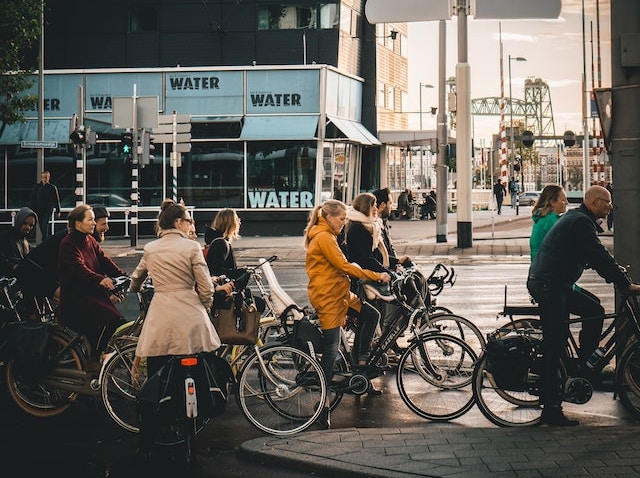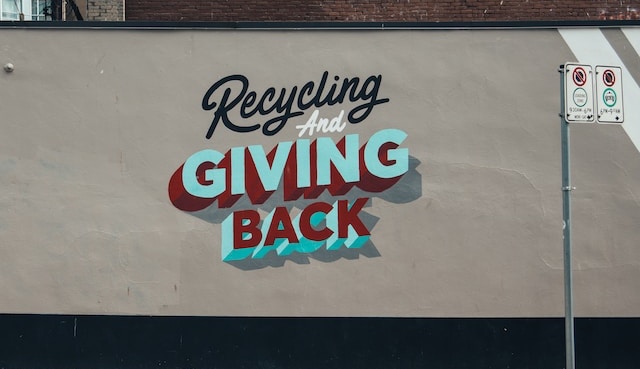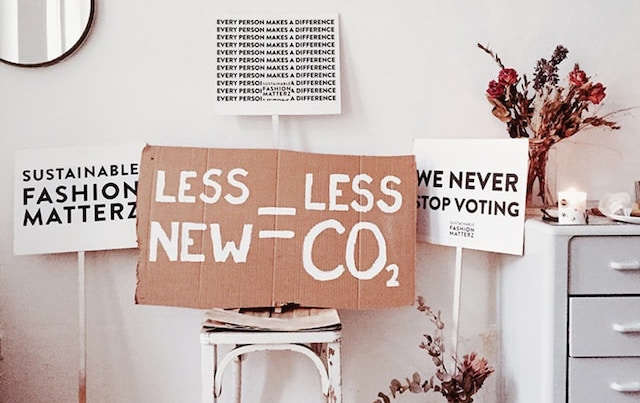Cover photo by Evie S. on Unsplash
Today’s Focus of Attention is reader-supported. We sometimes include products we think are useful for our readers. If you buy through links on this page, we may earn a small commission.
A carbon footprint – we’ve all heard the term, but what does it mean?
In simple terms, your carbon footprint measures the total greenhouse gases, such as CO2 and methane, that you personally release into the atmosphere through your actions and lifestyle choices.
The larger your carbon footprint, the greater your contribution to climate change and environmental degradation. Scary thought, right?
Well, here’s the good news: By making small changes in your daily routines, you can reduce your carbon output and make a big difference to our planet.
In this guide, we’ll share 11 practical tips to help you get started. Ready to become a friendlier inhabitant of Earth?
Understanding our carbon footprint
It comes in different forms, with energy consumption being the largest source. The environmental impact of the products we buy is influenced by the use of electricity and fuel in their manufacturing.
Even the food we eat, the waste we generate, and the volume of water we consume.
Online calculatorshelp us measure it. They ask about our daily habits, such as our diets, transport choices, and power demand.
If we understand where most of our emissions come from, we can target those areas for reduction.
Tip 1: Embrace Green Commuting

Do we need to drive everywhere? We all know that cars are a vast source of greenhouse gases.
By choosing public transport, cycling, or even walking, you lower your carbon footprint by a sizable margin.
Will you ride your bicycle to work this week?
If you can’t ditch the car completely, consider carpooling. I’ve saved a considerable amount of money through carpooling.
Not only does making your way with others reduce emissions, but it can also help alleviate traffic congestion and improve air quality. Besides, isn’t it more fun to share a journey and talk in the meantime?
But what if you must drive on a regular basis? Switch to an electric or hybrid vehicle. They are far cleaner than their petrol-guzzling counterparts, and as technology improves, their efficiency is only getting better.
Tip 2: Create a Sustainable Sanctuary

Appliances that are Energy Star-rated consume 10-50% less power than standard ones. These energy-saving marvels cut down your carbon footprint in addition to saving you money by lowering your electricity bills.
Moreover, proper insulation limits the energy required for heating or cooling, keeping your place cosy all year. An environmentally friendly home is a comfortable home.
Ready to take things a step further? Invest in clean sources such as solar or wind. With the growing availability and affordability of residential alternative systems, green power is now more accessible than ever to households.
Tip 3: Consumption with a Conscience

Remember this: Every product we consume comes with a carbon footprint. From the energy used in production to the gas emissions in transport.
Our shopping habits affect the planet in a straight line.
So, how can we make more eco-friendly choices? Start by choosing resource-efficient or secondhand products. Buying pre-owned doesn’t always mean compromising on quality.
You’d be surprised at the treasures you can find in thrift stores, and for every item you buy, there is one less article that needs to be produced new.
And of course, let’s not forget about recycling and composting. Proper waste management downsizes the quantity of garbage that ends up in landfills, reducing emissions associated with litter decomposition.
Tip 4: Water Wisdom

Water is one of our most precious resources, yet we often take it for granted. By being more mindful of your water usage, you bring down your carbon footprint to a great degree.
Consider your daily routines. Simple changes, such as taking a shorter shower, fixing leaks without delay, not letting the faucet run while you brush your teeth, and running full loads in the washing machine or dishwasher, can minimise your water demand.
Another wise choice is to install water-efficient appliances. Products marked with the WaterSense label meet the US Environmental Protection Agency’s criteria for efficiency and performance. They not only save water but also cut your bills.
Every drop counts!
Tip 5: Rethink Your Diet

Did you know that if everyone in the United States ate no meat or cheese just once a week, it would be like taking 7.6 million cars off the road?
The livestock sector is one of the largest contributors to serious environmental problems.
Deforestation, water pollution, and a huge amount of greenhouse gases result from meat production, according to the United Nations.
If you eat meat daily, you should have a meatless day. With just 24 hours of abstinence, you shrink your carbon footprint. It is manageable and has a successful effect.
Instead of beef or chicken, try a variety of plant-based proteins available on the market. They are delicious and nutritious.
What about cultivated meat? This is an alternative that is created in a lab and grown in factories. As far as we know, it is eco-friendlier, and agencies, including the FDA, have given it the green light for consumption.
Tip 6: Flight-Free Adventures

Air travel is a significant contributor to global carbon emissions. On a single flight, a plane can release several tonnes of CO2 into the atmosphere.
So, the next time you plan a trip, why not contemplate a greener mode of transport?
For quick trips, trains, buses, or cars are often a viable alternative to flying. They may take a bit longer, but they’re an opportunity to slow down and enjoy the journey.
Plus, you’ll get to see more of the landscape along the way, turning the trip itself into part of the adventure.
But you don’t always have to travel a great distance to have a pleasant holiday. Why not explore your local area and discover the hidden gems in your own backyard? You would be surprised by the incredible destinations you could reach by bike or on foot, saving money and reducing your carbon footprint at the same time.
So, where’s the next stop on your green voyage?
Tip 7: Greening Your Environment

Plants absorb CO2 from the air, mitigating greenhouse gas levels.
They likewise offer habitat for wildlife, prevent soil erosion, and keep your home cooler.
Start your own garden if you have a backyard or a small balcony. Consider container, vertical, or community gardening.
Add more greenery to your life.

Tip 8: Energy Hack

Much of the electricity we use comes from burning fossil fuels, so decreasing its consumption is an effective way to lower our carbon footprint.
Buy LED light bulbs; they spend up to 80% less current than traditional incandescent ones and last far more, saving both power and money.
They come in diverse colours and brightness levels, so you may find the perfect mood for every room in your house.
Tip 9: Farm-to-Table Living

Food that doesn’t travel long distances to reach your plate has a lower carbon footprint. Buying from local farmers supports domestic economies and promotes biodiversity.
Eat foods that are in season. They need fewer natural assets to grow and transport, reducing the overall environmental impact.
Tip 10: Master the three R’s: Reduce, Reuse, Recycle

The more waste we produce, the more energy and resources are needed to manage it.
By cutting down our consumption, reusing items where possible, and recycling what we can’t reuse, we decrease our carbon footprint.
Rather than throwing things away, imagine how they might be reused. Old jars, for instance, are for storage; worn t-shirts as rags; and cardboard boxes as organisers.
Not all materials are recyclable in all areas, and certain items need special handling. So, be aware of your local recycling guidelines to confirm that your recyclables can indeed be recycled.
Tip 11: Fashion: Quality over Quantity

Fast fashion is cheap, disposable clothing produced at breakneck speed to keep up with trends.
From the immense water usage in production to the pollution caused by discarded clothes, fast fashion has a substantial repercussion on the global carbon footprint. Before buying countless low-cost garments, think about paying for fewer, higher-grade items.
Many brands are now focusing on sustainability, using eco-friendly materials, and ensuring fair labour practises. Research and support those firms that make a positive impact.
Extend the life cycle of your clothes. Rather than throwing them away, donate, sell, or recycle. Plenty of organisations accept used clothing, and some companies even have take-back programmes for their products.

Now, we’d love to hear from you. What steps have you taken to reduce your carbon footprint? Do you have any green living advice to share?
Let’s all commit to making our world a little greener, a single day at a time. After all, we only have one Earth.
By implementing these tips, you’ll not only minimise your carbon footprint, but you’ll also contribute to a more sustainable and healthier planet. Each slight change counts, and together, we can bring about a major shift.
So, what’s your first step going to be? We’re eager to embark on this green journey with you.
Share your thoughts and experiences in the comments below!


